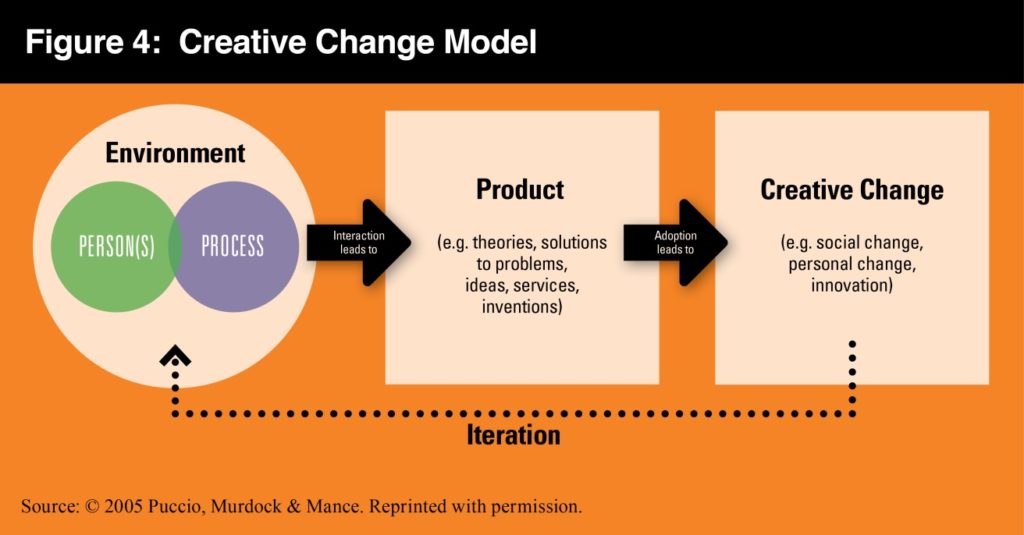Creativity in Decision Making
Carol Ann Blank, MMT, MT-BC
Blog Post #2 OCMT 2015
Through my studies at Drexel University, I have come to view my clinical work with parent-child dyads in individual music therapy through a systems lens. Systems-oriented thinking can be described as a way to understand the whole of a (biological) system through the relationship between each of the parts. Bateson (1972) and Bertalanffy (1968) describe three principles of General Systems Theory (GST) equifinality, feedback, and adaptiveness. The following discussion contains some of my thoughts on how each of these principles is part of the creative process for music therapists working with parent-child dyads. It is my intention that this discussion be a jumping off point for other discussions regarding music therapy clinical decision making with other populations. That’s where you come in!
Equifinality: There’s more than one way to sing a song.
The first principle of GST is equifinality. Simply put, there is more than one way to achieve a goal. When I work with a parent-child dyad, it helps me to know that if a child has trouble meeting her hands at the midline, I could use any number of musical experiences to create the space in which this can happen. For example, we can sing Eensy, Weensy Spider with the hand motions, or A Ram Sam Sam, or we can clap hands, or we can tap egg shakers together… The list is endless.
Feedback: What goes in shapes what comes out.
The second principle of GST is feedback. This is the information that results from a stimulus to the system. When I bring my guitar out to play the Hello Song, and the child’s face lights up, that’s gives me a completely different piece of information than if the child throws himself crying on the ground. I have a whole lot of choices of what to do in a session, but these choices become more refined as the session progresses.
Adaptiveness: What I do with what I am given.
The final principle if GST is adaptiveness. What do I do with the responses from a parent and a child to a song or the way I am presenting it? This is important information, and my choices are complicated by the fact that the parent and the child may have very different reactions to the experience. For example, a parent may want to increase the stimulation—quicken the tempo by singing or playing faster, or increase the intensity by waving the scarf frenetically or playing an instrument loudly. The child may be showing signs that she needs to have less stimulation by shutting her eyes, grimacing, arching her back, or crying. As the clinician, I am responsible for creating a safe place for both of them, the child and the parent, and I should do so creatively so that everyone’s needs are met: the parent’s need to feel effective and the child’s need to have a experiences of music that help her regulate her internal state of arousal.
Creativity in Systems
Creativity Rising, by Puccio, Mance, Switalski, and Reali (2012) discusses the role of creativity in change. Therapy is about change, so this model may be helpful.
There is a lot to this model, but let’s focus on the product for now. According to Puccio and colleagues, the creative products are “tangible and intangible outcomes that are both new and useful” (Kindle Location 760). The end result of music therapy with a parent-child dyad might be a renewed sense of relationship with her baby. The child’s apparent tolerance for sensory input while maintaining a regulated state of arousal might be another creative product. A home program for the parent to implement throughout the intervening period between music therapy sessions is an example of a tangible creative product, especially if the home program was created with the parent’s input. As music therapists, we hold a great deal of responsibility for how these creative products come to be.
I hope you have found this discussion helpful. I look forward to reading your thoughts.
References
Bateson, G. (1972). Steps to an Ecology of Mind. Chicago, IL: The University of Chicago Press.
Bertalanffy, L. v. (1968). General system theory. New York, NY: George Braziller, Inc.
Puccio, G. J., Mance, M., Switalski, L. B., & Reali, P. D. (2012). Creativity Rising.Buffalo, NY: ICSC Press.



One Response